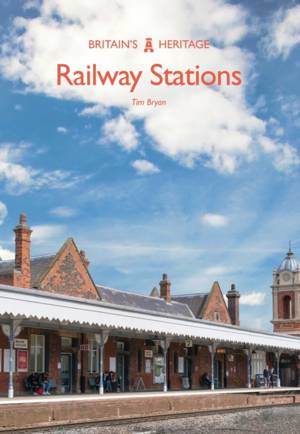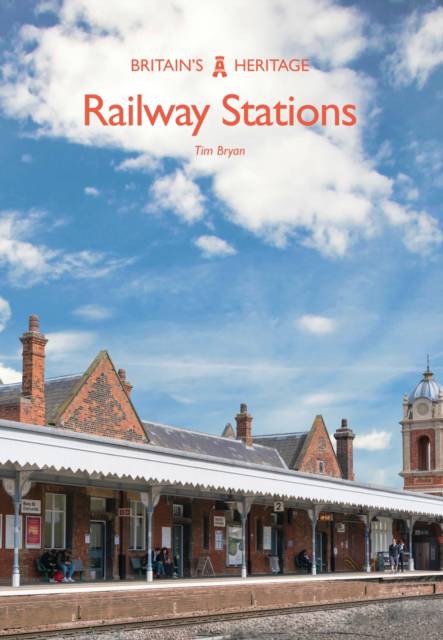
- Afhalen na 1 uur in een winkel met voorraad
- Gratis thuislevering in België vanaf € 30
- Ruim aanbod met 7 miljoen producten
- Afhalen na 1 uur in een winkel met voorraad
- Gratis thuislevering in België vanaf € 30
- Ruim aanbod met 7 miljoen producten
Zoeken
Omschrijving
Railway stations were a prominent feature of most towns and villages in Britain until post-war modernisation and closures swept many away. The largest and most imposing stations were in large towns and cities. Among the most impressive were the London termini such as King's Cross, Liverpool Street, Paddington and Waterloo. They handled and (still handle) millions of long distance and commuter travellers every year. Elsewhere, larger cities like Birmingham, Manchester and Glasgow often had more than one important station. Behind their imposing façades, they provided all manner of facilities for passengers - waiting rooms, bookstalls, refreshment rooms, luggage and lavatories. Meanwhile, country stations, especially those on branch lines, were an important part of rural life, providing a vital link for goods and passengers to and from the countryside. As the start and end point of millions of daily commutes, business trips, days out and family holidays, railway stations are undoubtedly among Britain's most special buildings. This book is part of the Britain's Heritage series, which provides definitive introductions to the riches of Britain's past, and is the perfect way to get acquainted with the railway station in all its variety.
Specificaties
Betrokkenen
- Auteur(s):
- Uitgeverij:
Inhoud
- Aantal bladzijden:
- 64
- Taal:
- Engels
- Reeks:
Eigenschappen
- Productcode (EAN):
- 9781445669007
- Verschijningsdatum:
- 15/08/2017
- Uitvoering:
- Paperback
- Formaat:
- Trade paperback (VS)
- Afmetingen:
- 165 mm x 234 mm
- Gewicht:
- 182 g

Alleen bij Standaard Boekhandel
+ 27 punten op je klantenkaart van Standaard Boekhandel
Beoordelingen
We publiceren alleen reviews die voldoen aan de voorwaarden voor reviews. Bekijk onze voorwaarden voor reviews.











